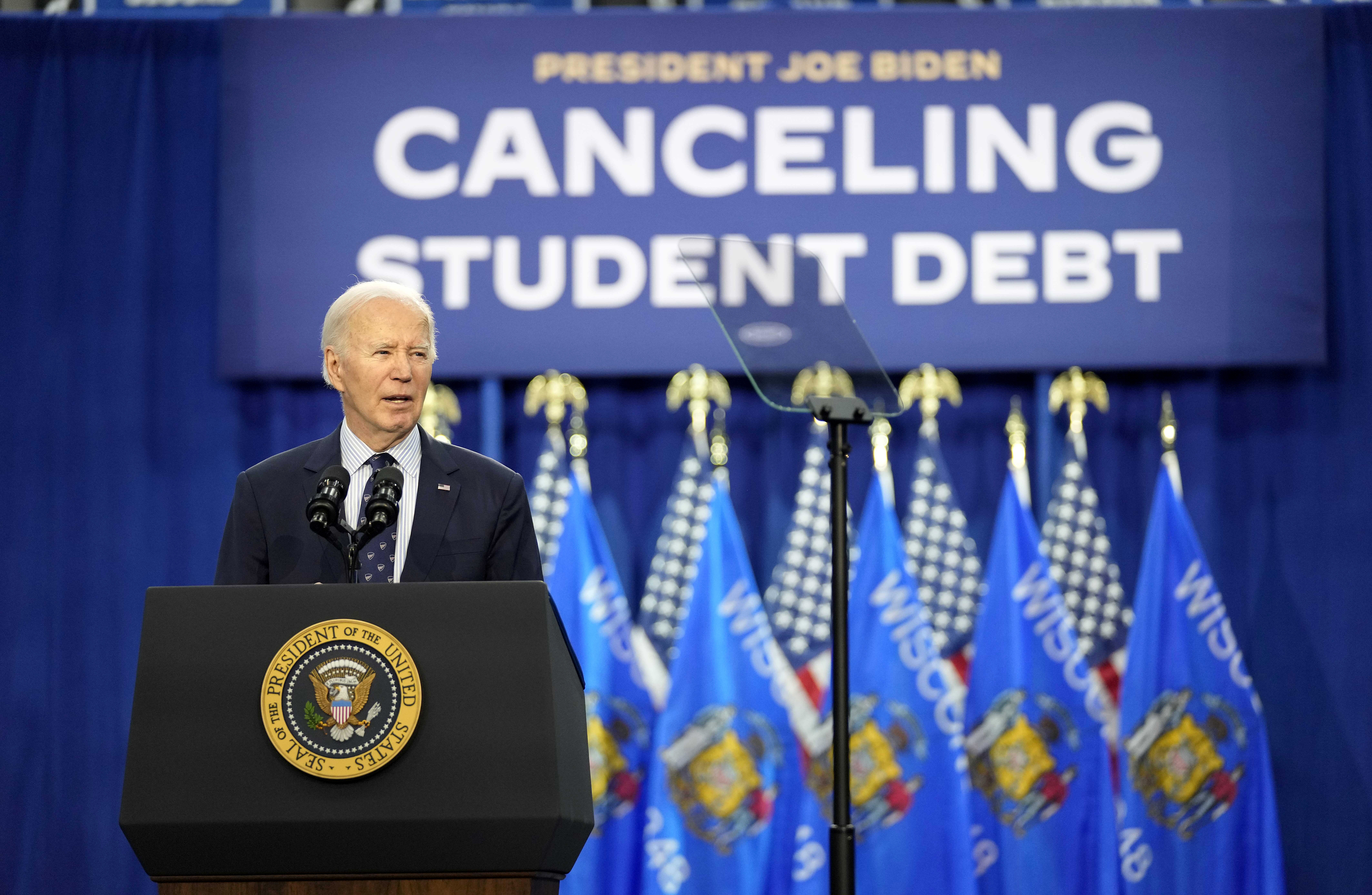
FILE: President Joe Biden speaks at an event about canceling student debt, at the Madison Area Technical College Truax campus on April 8, 2024, in Madison, Wis.
Kayla Wolf / AP
The past year has been head-spinning for student loan borrowers. After nearly three years of COVID-era forbearance, people with federal student loans had to navigate a rocky return to repayment last fall. And there’s been a slew of Biden Administration executive actions looking to forgive student loans, many of which have been caught up in lawsuits.
For many Oregonians with student loans, the last several months have been a mess. Some say loan servicers have given them incorrect repayment plans, others were puzzled by loan forgiveness requirements and some Oregonians fell victim to scams capitalizing on disoriented borrowers. That’s all according to a new report released by the state’s student loan ombudsman this month.
“There is a lot of confusion, there are a lot of challenges, rules are changing and people have a lot of shame and discomfort about their debt,” said Oregon’s student loan ombudsman Lane Thompson. “Seeking help [with loans] is a good idea. It’s worth it.”
Thompson is the first person to hold this relatively new office housed within the Oregon Department of Consumer and Business Services. Lawmakers created the new position in 2021 to protect the rights of student borrowers in the state. Thompson, who took the job in 2022, says a personal goal for their one-person office is to lessen wealth inequality.

Lane Thompson is Oregon's first student loan ombudsman. They are tasked with supporting the state's student loan borrowers and giving oversight to loan servicers.
Courtesy of Oregon Division of Financial Regulation
“A lot of people who end up behind on their student loans or who are otherwise in a bad situation, in regards to their student debt, simply don’t have the kind of resource access and opportunities that other people without that debt have,” said Thompson.
Other data from the report shows that Generation X and Millennials appear to be the hardest hit by student loan debt. People between the ages of 35 and 49 hold the largest proportion of student loan debt in the country. Oregonians follow that trend, with people in that age group representing the largest number of borrowers and owing the most debt, a total of more than $9 billion.
But there are signs the student debt situation is improving in Oregon. The number of Oregonians with federal student loan debt is down slightly overall, by about 3%, compared to this time last year. The report showed that nearly 536,000 people in the state have some federal student loan obligations this year. Close to half owe somewhere between $10,000 and $40,000. And about 15% owe $5,000 or less.
The report also showed a 70% increase in complaints to the student loan ombuds office from June 2023 to June 2024. A significant jump in complaints started coming in October 2023, the same month federal student loan borrowers were expected to start repaying loans again.
Part of Thompson’s job is to help Oregonians resolve these complaints. Most people contacting the ombuds wanted to know more about federal student loan forgiveness options. Over the past year, Thompson has helped borrowers in the state get their loan balances canceled, receive refunds for overpayments and corrected information at credit bureaus.
“What I’m most proud of is the emails I get from people who say, ‘Thank you so much, you’ve helped me understand this, you’ve resolved my issue.’ That kind of human connection is what’s missing from this system,” said Thompson. “It’s so vast and it’s so far reaching that people often don’t have that human touch.”


